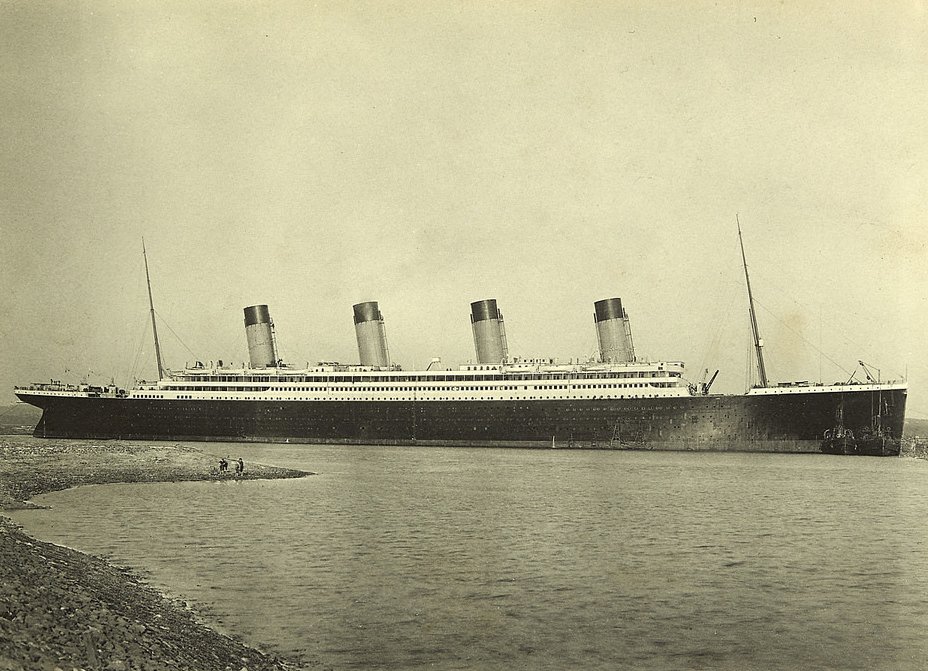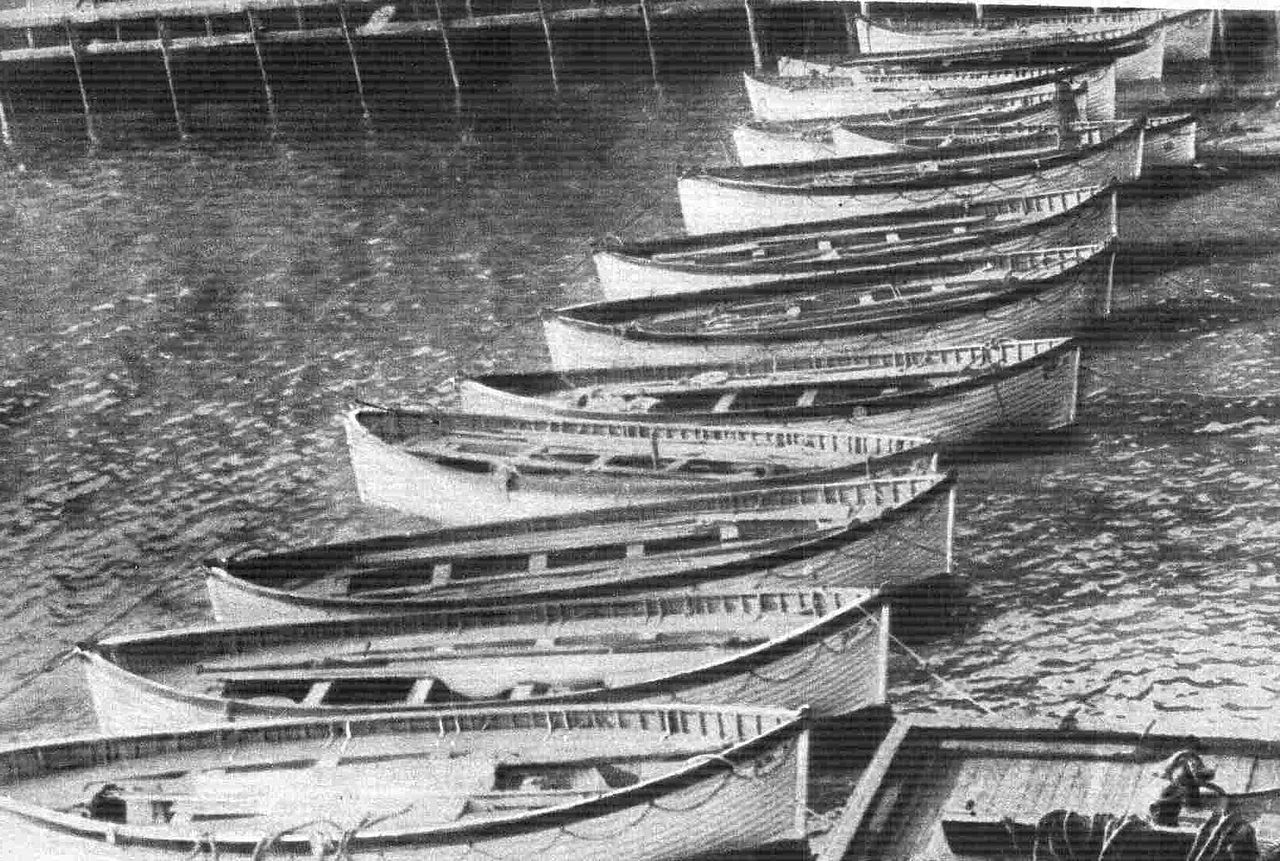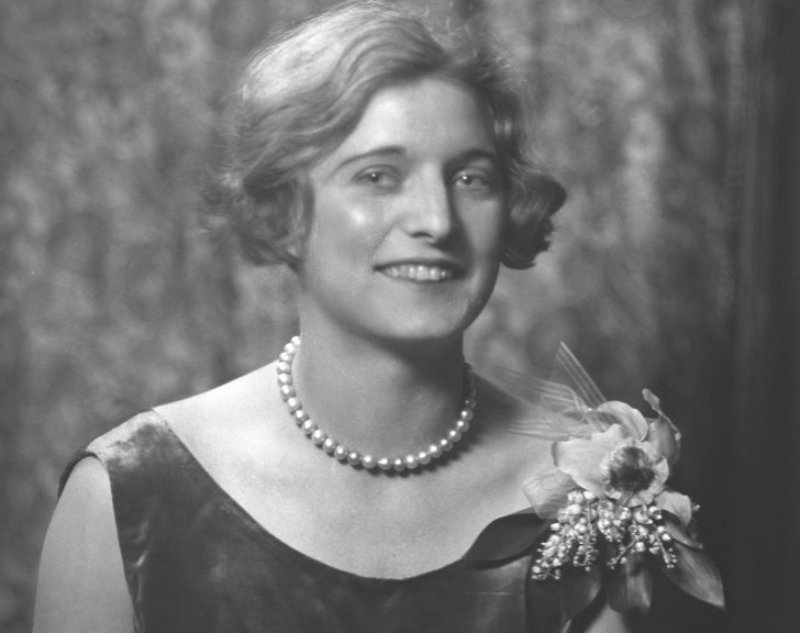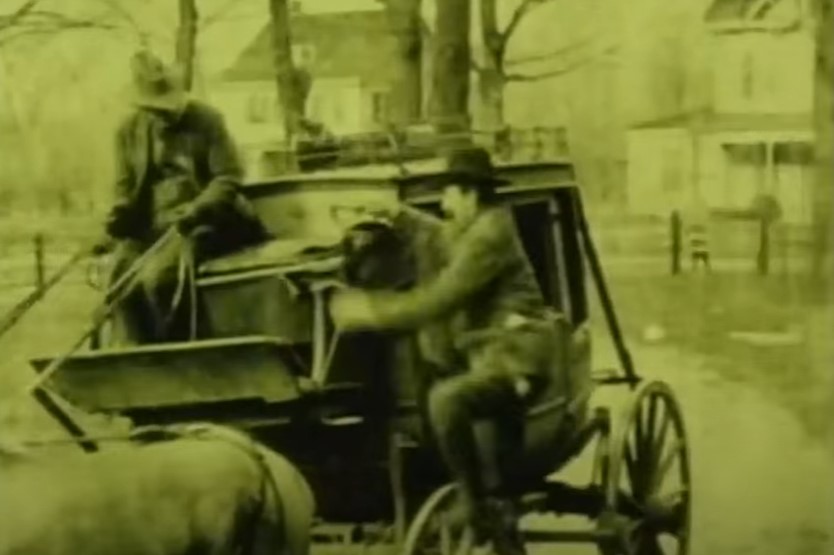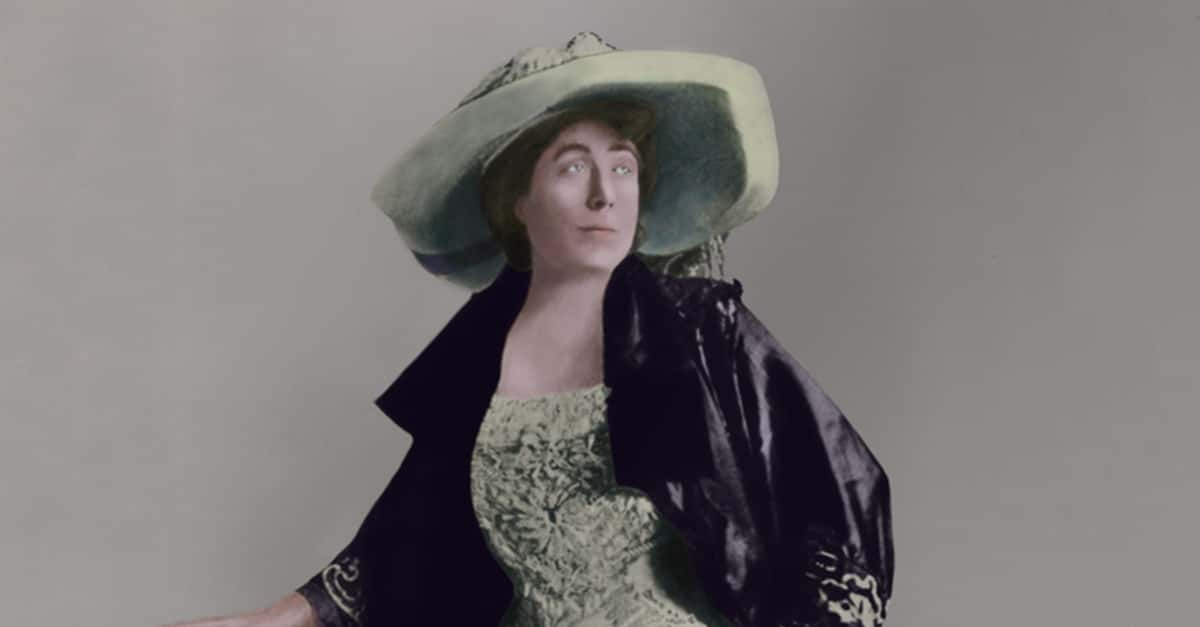Of all the famous survivors of the Titanic, Dorothy Gibson is the least known—and the most scandalous.
1. She Was Infamous
Before April 15, 1912, Dorothy Winnifred Brown—AKA Dorothy Gibson—was in the spotlight for her burgeoning acting career and arresting beauty. After that day, everything changed. She was one of the lucky survivors of the Titanic disaster…but in many ways, that meant her nightmares were just beginning. What followed was a life of trauma, deaths, and international scandals.
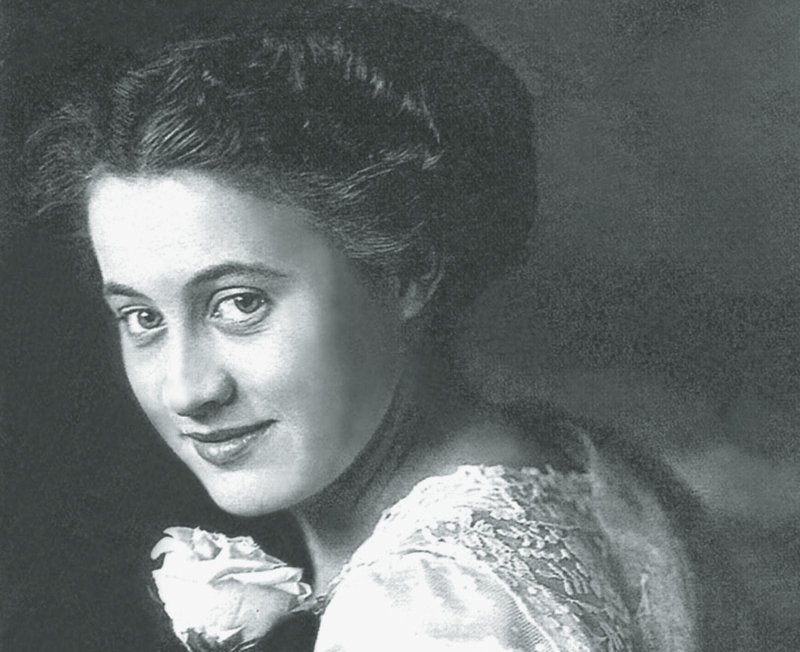 Randy Bryan Bigham Collection, Wikimedia Commons
Randy Bryan Bigham Collection, Wikimedia Commons
2. She Had Daddy Issues
The beginnings of Gibson’s life were right out of the Old Hollywood starlet playbook. Born in Hoboken, New Jersey in 1889, tragedy struck her at a young age. When she was just three, her father passed, leaving little Dorothy was some daddy issues that she would never quite shake off—judging from the rest of her maladjusted life.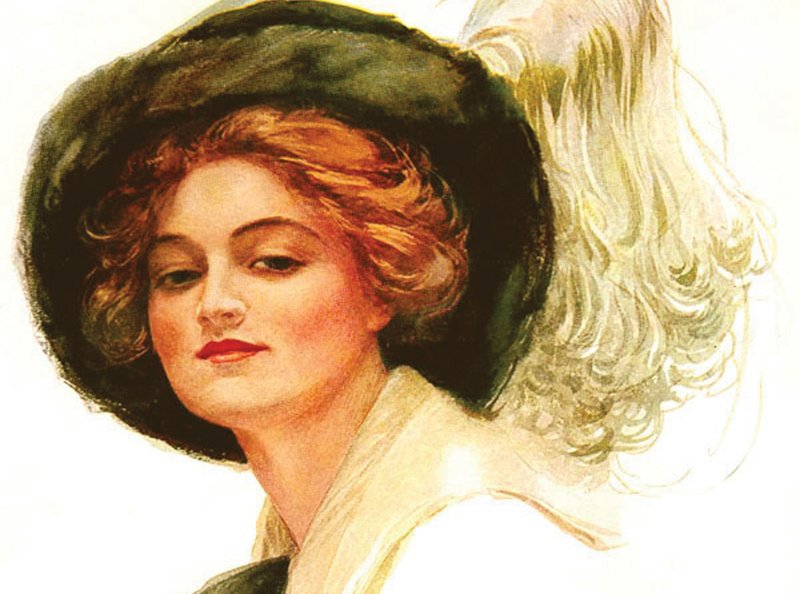 Harrison Fisher, Wikimedia Commons
Harrison Fisher, Wikimedia Commons
3. She Was A Muse
Dorothy Gibson always craved fame and the spotlight, and before she was out of her teen years she was performing in vaudeville and Broadway productions. But that wasn’t all: With wide eyes and an open, comforting face, she soon became commercial artist Harrison Fisher’s favorite model to draw. This led to a new kind of fame entirely.
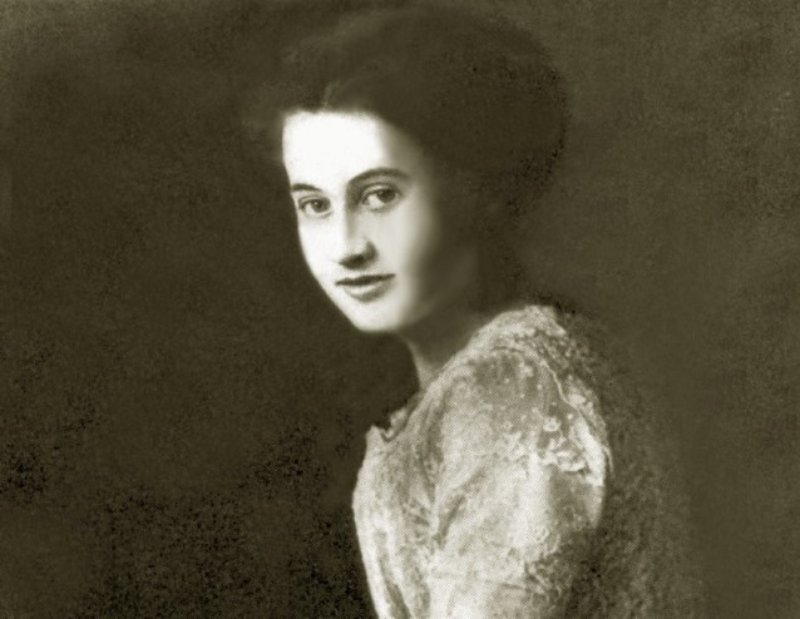 Randy Bryan Bigham Collection, Wikipedia
Randy Bryan Bigham Collection, Wikipedia
4. Her Face Was Everywhere
Where some women were playing bit parts off Broadway every night, trying to get a manager to notice them, Gibson needed to do no such thing. Thanks to her partnership with Fisher, she was quite literally everywhere—on postcards, posters, magazines, and other illustrations. She was so associated with his work, people called her “The Original Harrison Fisher Girl”.
And just as her professional life skyrocketed, so too did her personal entanglements.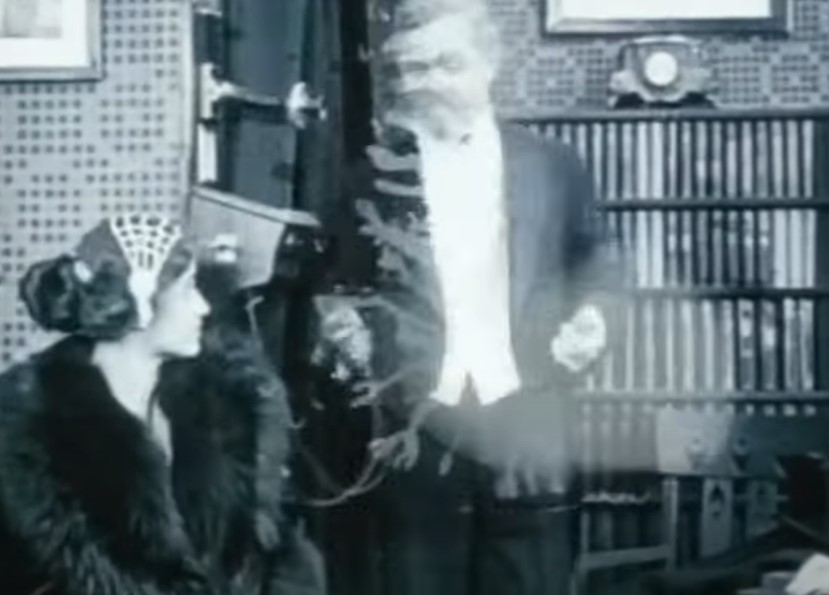 Eclair American, A Lucky Holdup (1912)
Eclair American, A Lucky Holdup (1912)
5. She Tried To Settle Down
In 1910, Dorothy snagged herself a man in the form of George Henry Battier. This introduced something new into her life. A pharmacist from the South, Battier may have represented a kind of earthy stability for Gibson, an antidote to her heady days as America’s favorite face. In any case, the pair quickly married. Yet just as quickly, it all fell apart.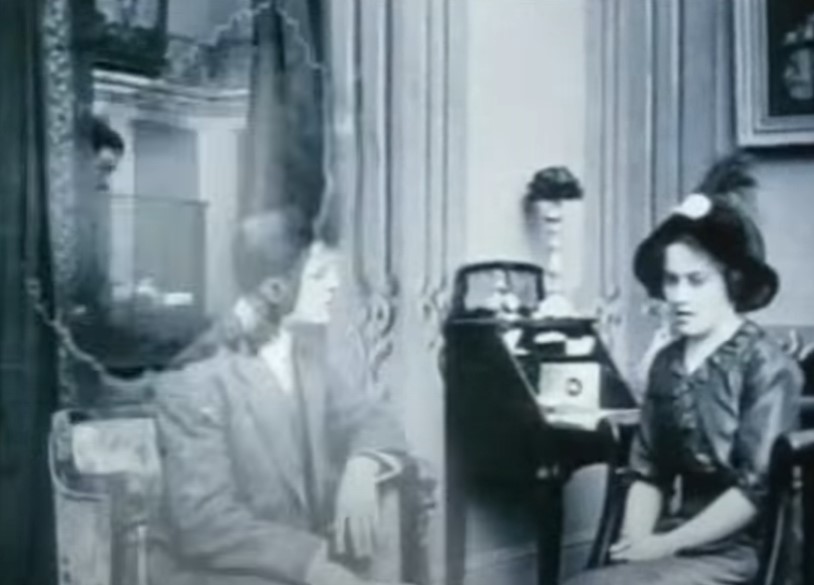 Eclair American, A Lucky Holdup (1912)
Eclair American, A Lucky Holdup (1912)
6. Her Marriage Was Doomed
Just a few months after tying the knot, Gibson decided the life of a homemaker just wasn’t for her, and she and Battier separated for good, eventually divorcing in 1913. Her rebound was…interesting. Newly single, she stopped posing as much for commercial illustrations and set her sights on a much more scandalous way to fame.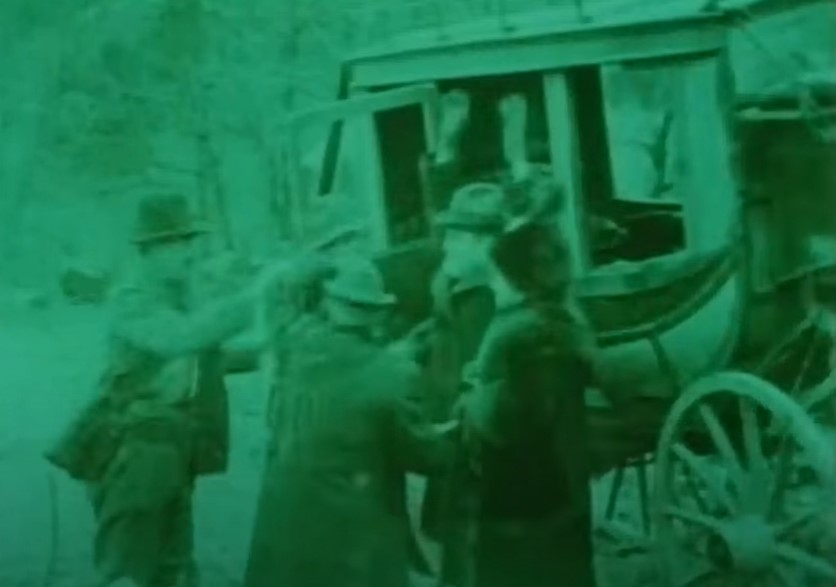 Eclair American, A Lucky Holdup (1912)
Eclair American, A Lucky Holdup (1912)
7. She Was A Star
By 1911, Gibson decided to try her hand at film, soon joining up with Lubin Studios as one of their regular actresses, and then with Éclair Studios as a leading actress. It was a crucial and triumphant moment. Audiences lapped Gibson up, and soon agents were promoting her as a “star”—one of the first film actresses to earn that name.
Gibson was riding high…not knowing disaster was just around the corner.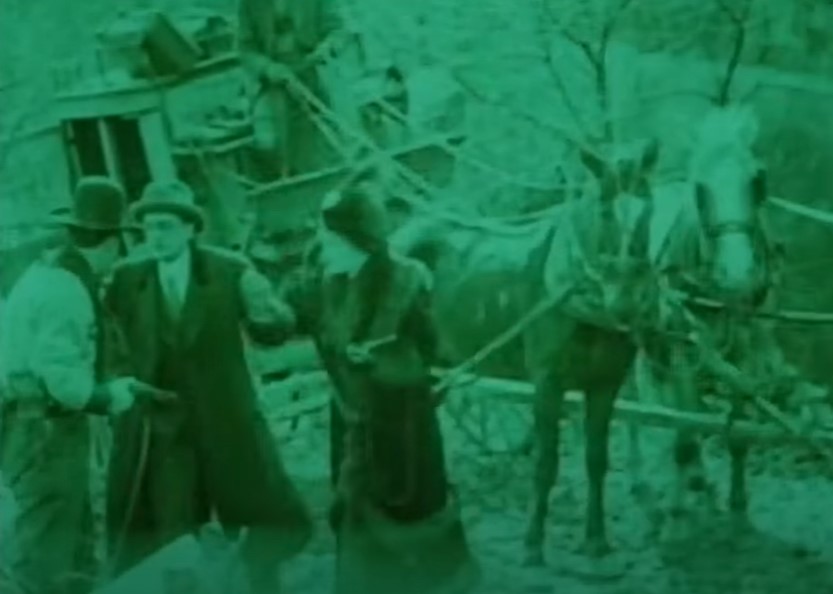 Eclair American, A Lucky Holdup (1912)
Eclair American, A Lucky Holdup (1912)
8. She Made A Fateful Decision
In 1912, Gibson did what many starlets do and took a lengthy, six-week vacation to Italy alongside her mother. For those six weeks, they must have been in heaven, taking in the sun and the atmosphere. But once Gibson needed to head home to film her next movie, her streak of incredible luck came to a screeching halt.
As a true-blue movie star, she decided her return voyage to America would be on the luxurious Titanic. Need I say this did not go well?
9. She Went First Class
At first, Gibson’s voyage on the Titanic would have been the height of elegance. She, naturally, bought herself and her mother first-class tickets, and they got on the vessel on April 10th from Cherbourg, France. Gibson was 22 years old, famous, and she had finally “made” it. But days later, just before midnight on Sunday April 14, she had a rude awakening.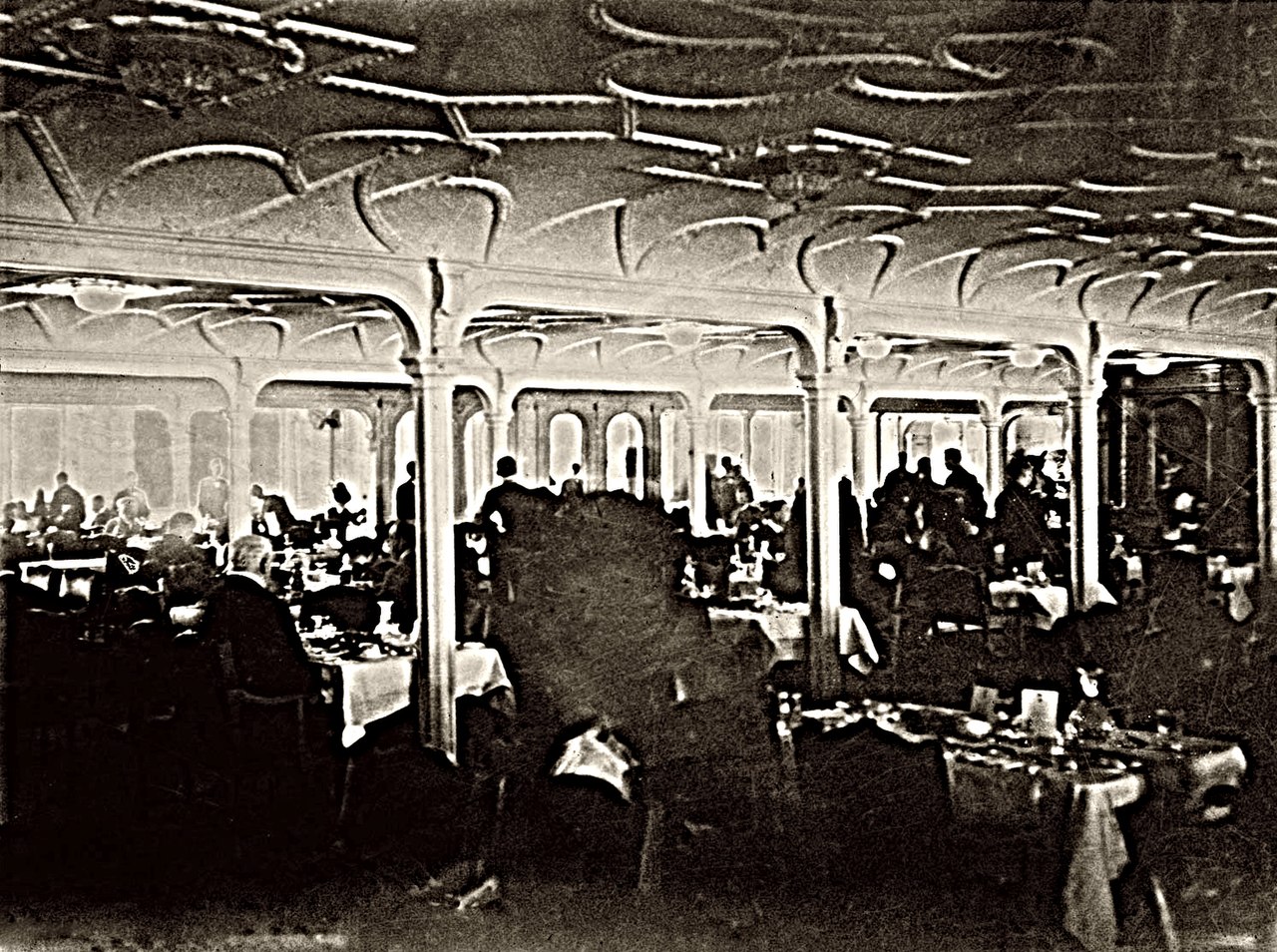 Francis Browne, Wikimedia Commons
Francis Browne, Wikimedia Commons

Sign up to our newsletter.
History’s most fascinating stories and darkest secrets, delivered to your inbox daily. Making distraction rewarding since 2017.
10. A Card Game Saved Her Life
Dorothy Gibson wasn’t asleep when the ship hit that fatal iceberg that Sunday. Instead, she had been up playing the card game bridge whist with her mother and two other players and was only just retiring to her cabin. According to the manners of the day, their Sunday game was a naughty “violation of the strict Sabbath rules of English vessels”. But in Gibson’s case, it may have saved her life.
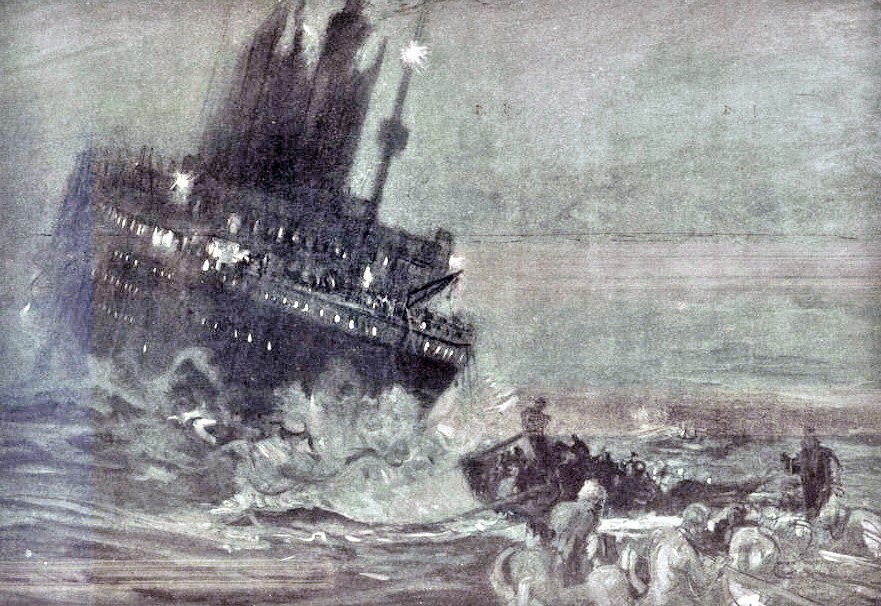 Henry Reuterdahl, Wikimedia Commons
Henry Reuterdahl, Wikimedia Commons
11. She Knew Something Was Wrong
At 11:40 pm, when the iceberg hit, Gibson actually heard the impact herself. Unlike the others who were asleep in their beds, then, she instantly knew something was wrong. She later described it as a “long, drawn, sickening crunch”. She was so sure there was a problem, in fact, that she went to investigate. What she saw followed her to the end of her days.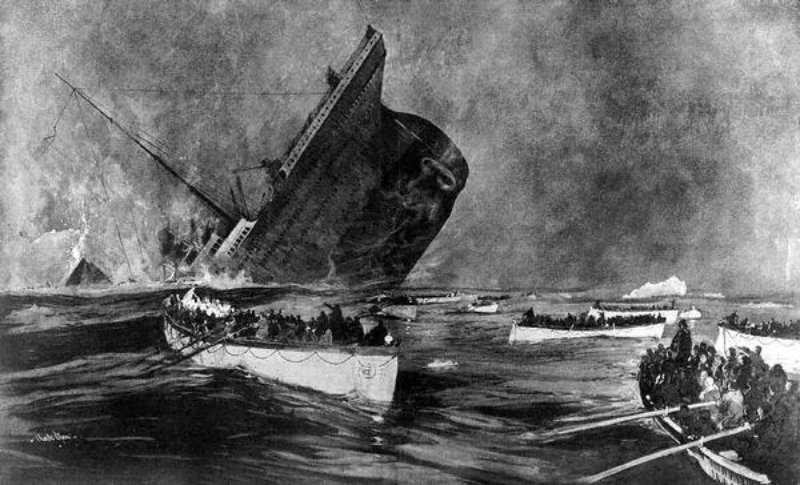 Charles Dixon, Wikimedia Commons
Charles Dixon, Wikimedia Commons
12. She Saw It Sinking
The Titanic was supposed to be unsinkable, but Dorothy Gibson witnessed a horrifying sight. It was, indeed, sinking. Even at this early hour in the disaster, she saw that water was beginning to flood the boat in such quantities, the deck was starting to list. Electrified and terrified at the same time, Gibson sprang right into action.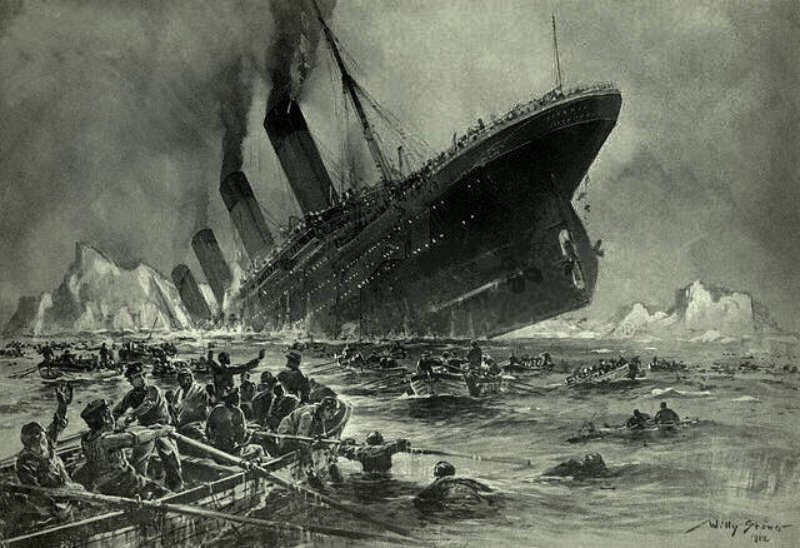 Willy Stöwer, Wikimedia Commons
Willy Stöwer, Wikimedia Commons
13. She Was A Quick Thinker
After seeing the carnage on the deck, Gibson acted quickly. She ran down to get her mother and told her they needed to get to a lifeboat, now. The two people who had been their bridge partners were also still up and heard this, and they too scrambled to get ready to leave.
Still, as you might know, the Titanic infamously only had enough lifeboats for half the people on board, and Gibson could have very well been playing a losing game. Except she wasn’t.
14. She Was First To Leave
Incredibly, Dorothy Gibson, her mother, and their bridge partners were so quick on the draw after the collision, they ended up in Lifeboat no 7—the very first lifeboat that crew members launched on that chilly April night. Then again, it did help that Gibson was a woman and in first-class—other passengers didn’t get so lucky.
Still, Gibson and 27 others launched off in their boat just an hour after the iceberg hit, hoping it was to safety. They had no idea what they were in for.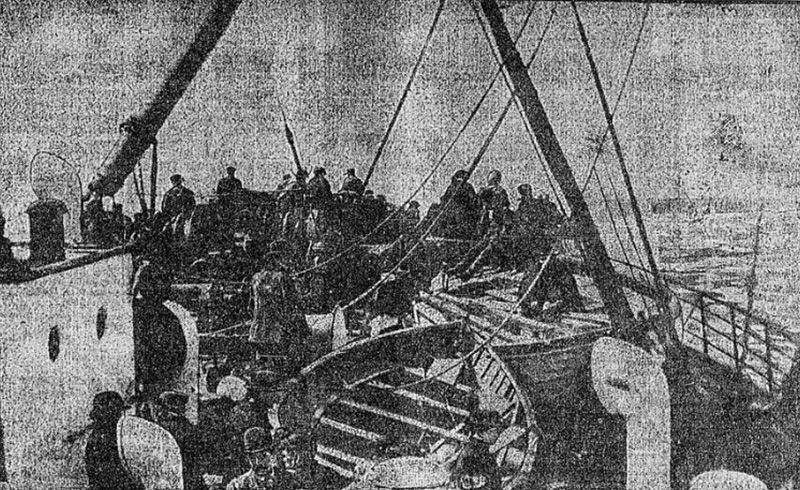 Unknown author, Wikimedia Commons
Unknown author, Wikimedia Commons
15. She Nearly Died Again
Soon after the lifeboat detached from the Titanic, the crew made a terrible realization. In the chaos, no one could find the lifeboat’s plug, which meant they were as good as goners in the chilly Atlantic ocean if they couldn’t find a solution fast. The one they came up with shows the deep desperation of everyone on board. J.W. Barker (Carpathia passenger) credited in The Sphere (London, 4 May 1912), p. 91., Wikimedia Commons
J.W. Barker (Carpathia passenger) credited in The Sphere (London, 4 May 1912), p. 91., Wikimedia Commons
16. She Grew Desperate
It was frigid in the ocean, yes, but it was also freezing in the lifeboat. So when the women started taking out their lingerie and the men pulled off their garments to stuff into the lifeboat’s plug hole, they were all likely chilled to the bone. Nonetheless, they clung onto life. Within hours, they realized it would get so much worse.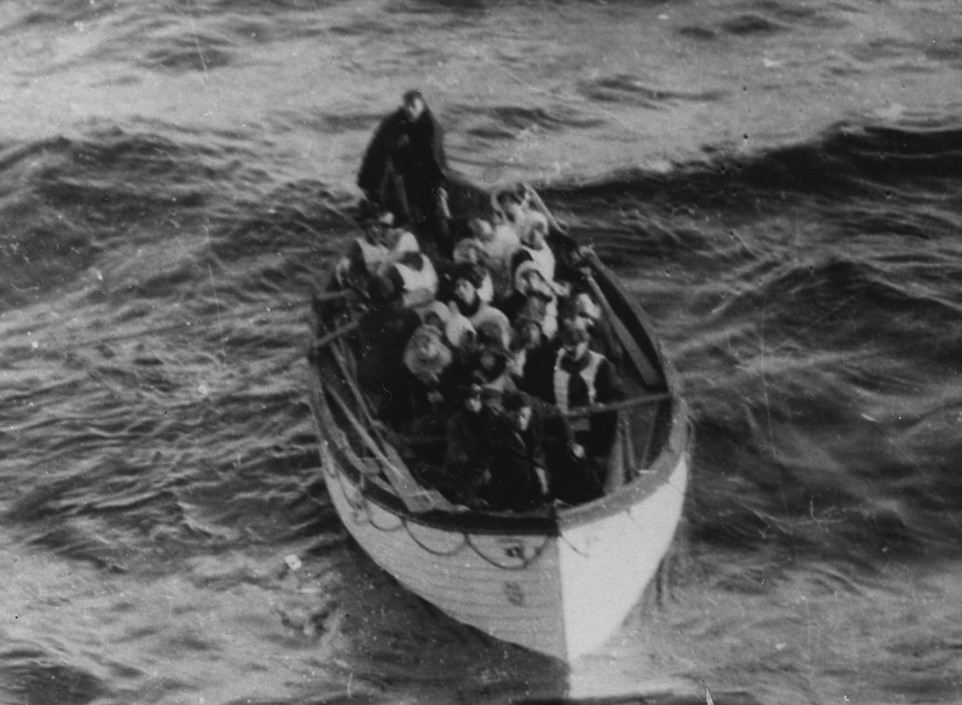 National Archives and Records Administration, Wikimedia Commons
National Archives and Records Administration, Wikimedia Commons
17. She Watched It Go Down
At 2:20 am, almost three hours after Dorothy Gibson first noticed the collision, the Titanic finally sank beneath the ocean. But it was far from over. At that point, half the Titanic passengers—those who couldn’t find a lifeboat—fell into that ice-cold Atlantic and had to fend for themselves. Only, of course, they couldn’t save themselves from hypothermia.
These next moments haunted Gibson more than anything that came before.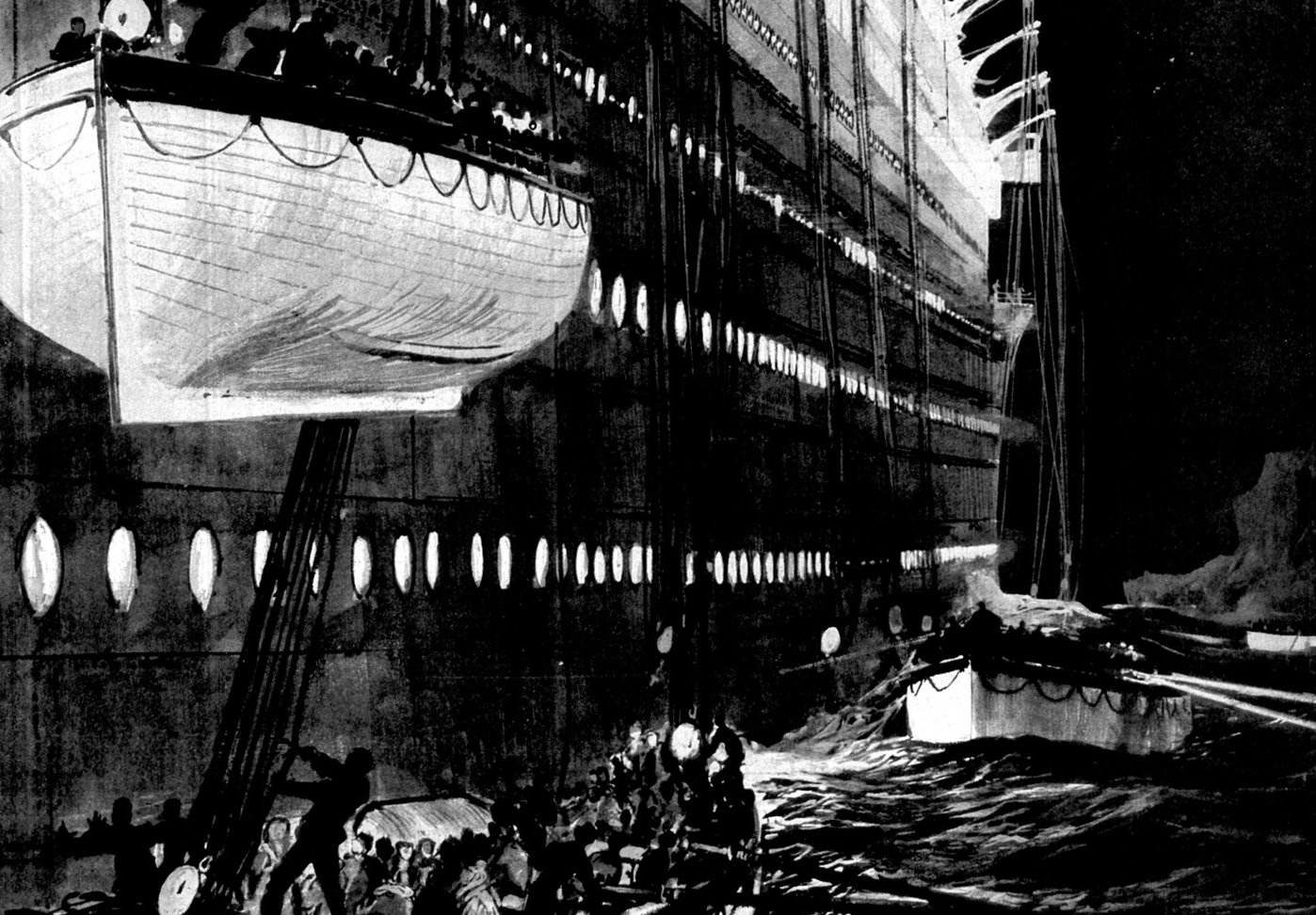 Charles Dixon, Wikimedia Commons
Charles Dixon, Wikimedia Commons
18. She Heard A Hellish Sound
Gibson, sitting safe in her lifeboat, remembered the moment the ship sank and those people floundered in harrowing detail. She later described the "terrible cry that rang out from people who were thrown into the sea and others who were afraid for their loved ones”. Then, there on the black ocean, she must have listened as most of those sounds turned to dead silence.
Something in her broke that day.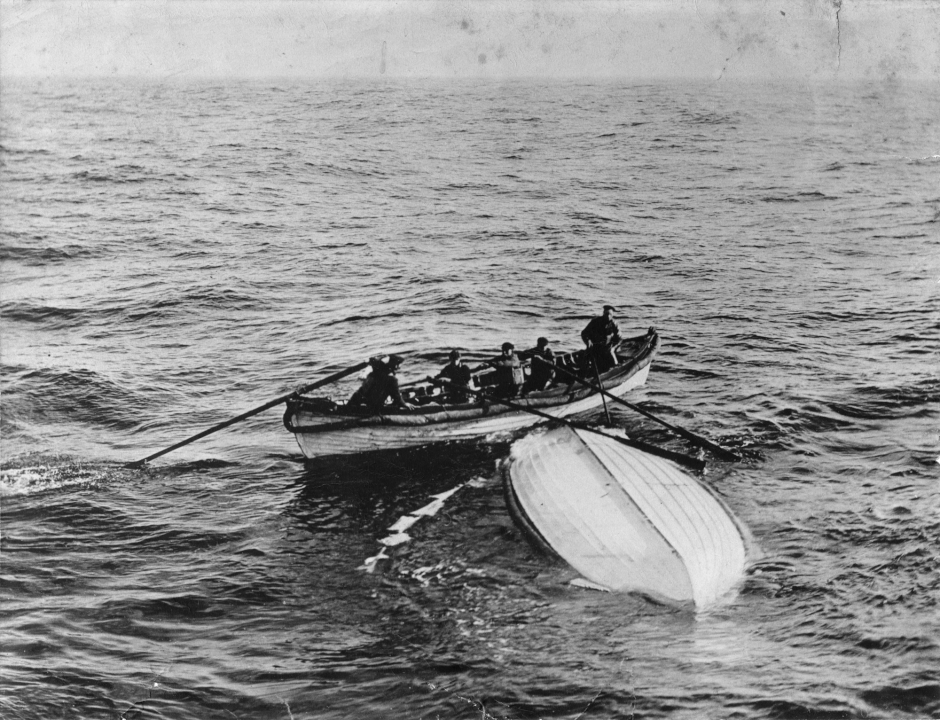 Unknown author, Wikimedia Commons
Unknown author, Wikimedia Commons
19. She Temporarily Lost Her Mind
As the long night wore on and still no help came—there was no responsive ship anywhere near the Titanic—Gibson’s reaction grew more deranged. She became, according to one of her bridge partners, “quite hysterical” and kept repeating, at full volume “I’ll never ride in my little grey car again”. When help did come, the damage was already done.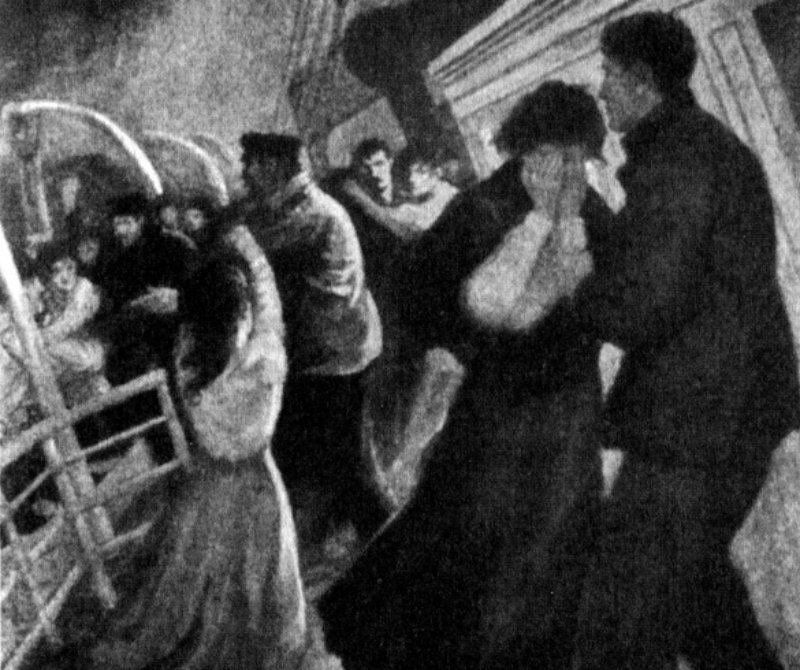 Unknown author, Wikimedia Commons
Unknown author, Wikimedia Commons
20. She Got “Lucky”
Eventually, the RMS Carpathia came and rescued what was left of the passengers of the Titanic—but that was precious few. Indeed, just over 700 people survived the sinking, while more than 1,500 people perished of hypothermia in those icy waters, or by other means. Dorothy Gibson was now one of the “lucky” few…but that luck was a cruel, double-edge blade.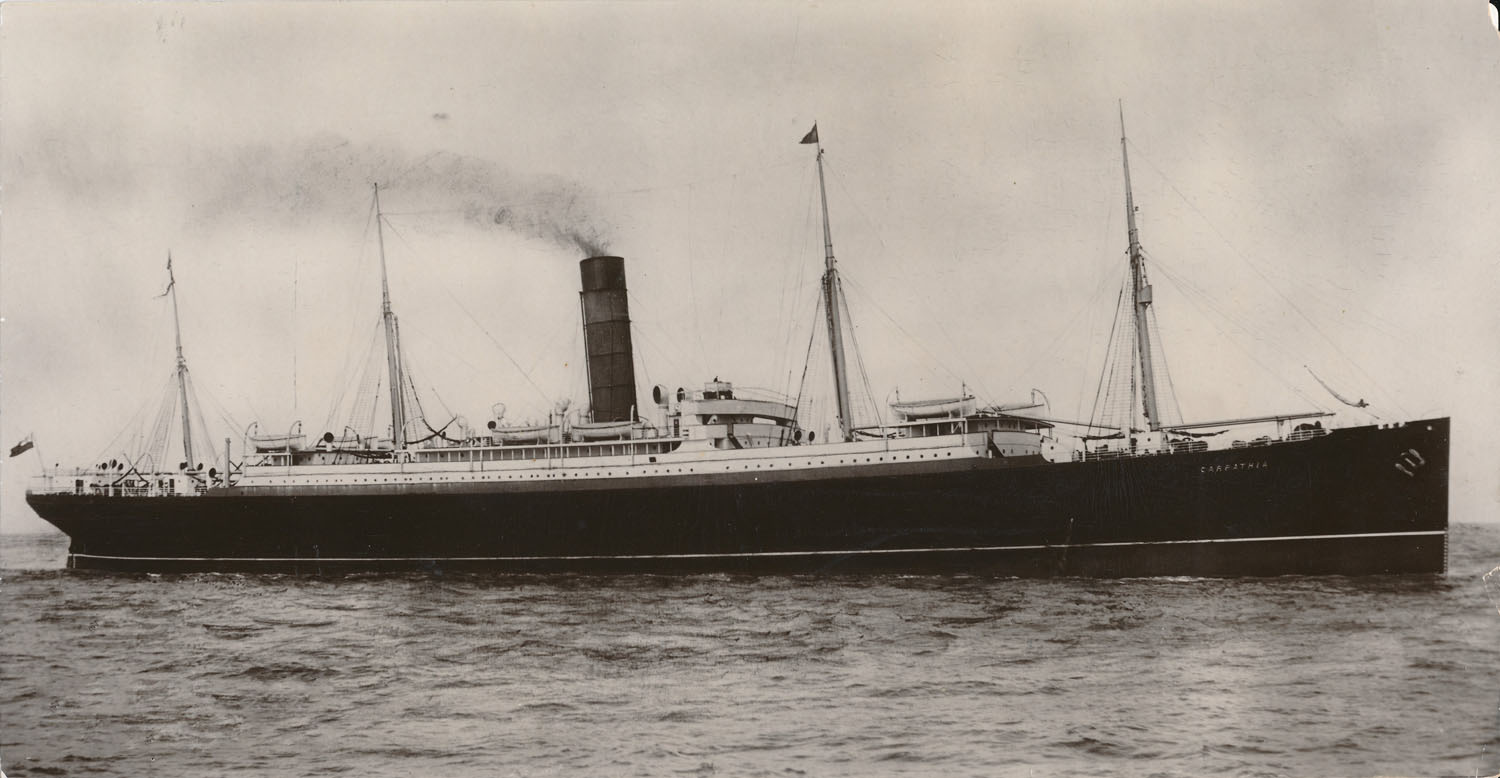 Unknown author, Wikimedia Commons
Unknown author, Wikimedia Commons
21. Her Studio Was Vicious
When Gibson finally landed in New York, her celebrity had now taken on a dark dimension…and her studio was all too happy to capitalize on it. Reportedly, Éclair Film Company producer Jules Brulatour—seeing the cinematic opportunity in the grimmest of circumstances—even sent several tugboats and camera crews to capture the Carpathia’s arrival with Gibson in tow.
It was ice cold—but it wasn’t the only underhanded trick he had in his bag.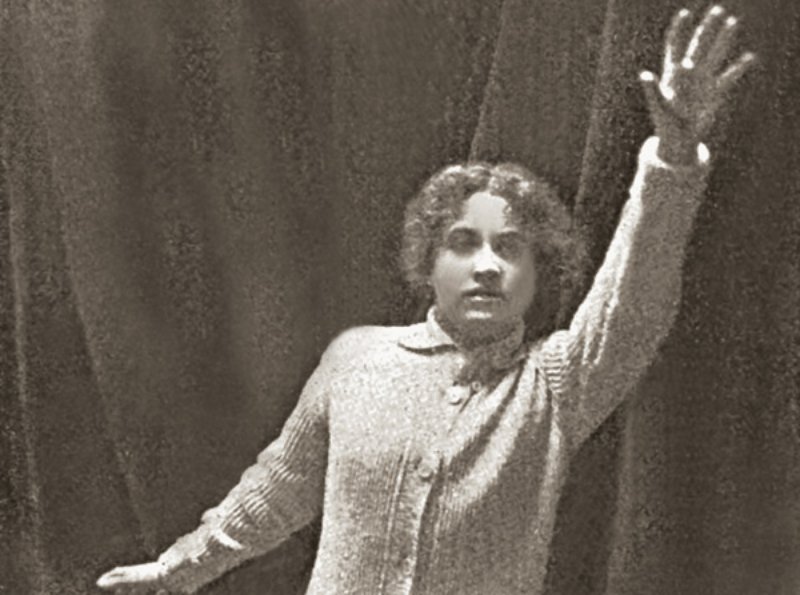 Eclair, Wikimedia Commons
Eclair, Wikimedia Commons
22. An Executive Forced Her Into A Movie
On April 22, just a week after the sinking, Brulatour put out a newsreel based on the footage he captured that day, which became a smashing success. That’s when he made Dorothy Gibson a chilling offer. Well aware that he had golden narrative on his hands in the form of a lead actress who had lived through the disaster, he asked her to make a new film, Saved from the Titanic, that would recreate the sinking.
Yes, this was as greedy and horrific as it sounds. But then he twisted the knife in.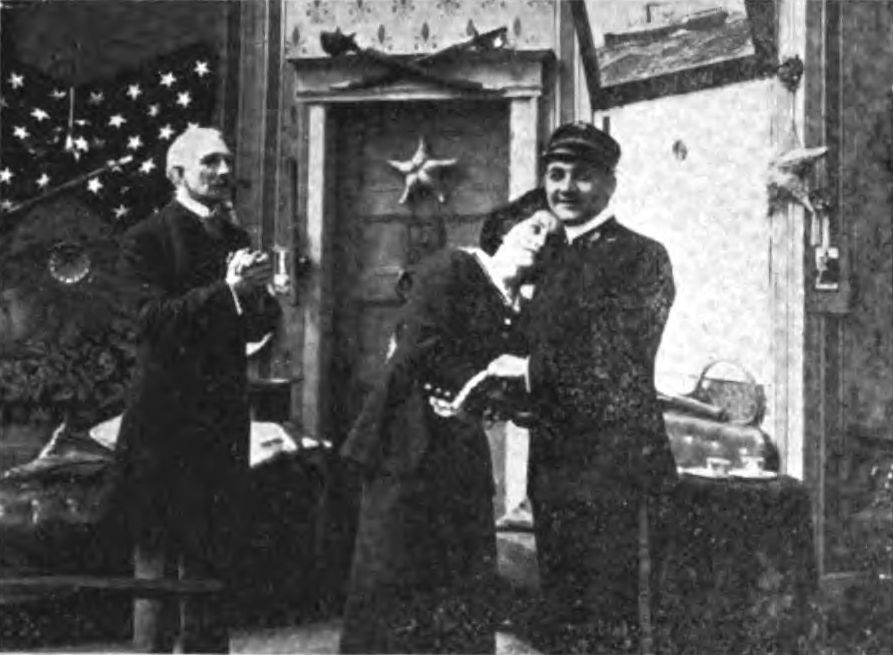 Éclair Film Company, Wikimedia Commons
Éclair Film Company, Wikimedia Commons
23. She Did It For The Money
Later on, when the dust had settled, Gibson claimed that she agreed to the film because it was an "opportunity to pay tribute to those who gave their lives on that awful night”. The reality, though, was a lot crueler. It’s likely Brulatour pressured his still-traumatized actress, telling her it would help her career in a big way.
Even so, if Gibson had been aware of what was ahead, she likely never would have said yes.
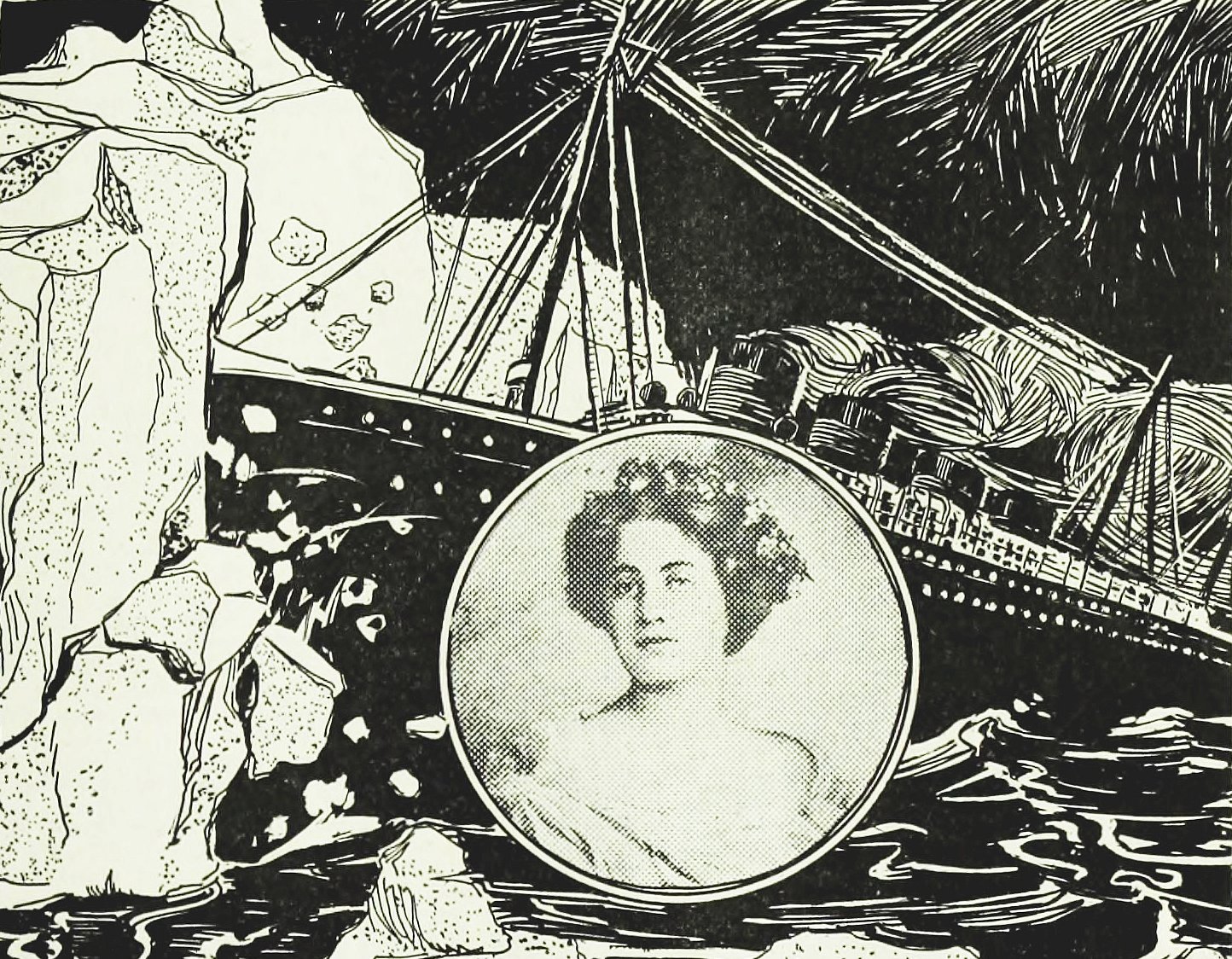 Eclair Film, Wikimedia Commons
Eclair Film, Wikimedia Commons
24. She Was On A Whirlwind Set
Production on Saved from the Titanic began immediately—after all, Brulatour needed to strike while the iron was hot. They filmed at both Éclair’s studios and on an old transport vessel in New York Harbor. They went at such a break-neck pace that the studio finished the 10-minute-long, one-reel film in just a week, putting it out one month and one day after the Titanic sunk.
It was rabid opportunism at its worst, and when audiences saw Gibson on screen, they must have gasped. Bettmann, Getty Images
Bettmann, Getty Images
25. Her Trauma Took On New Dimensions
Saved from the Titanic had made Dorothy Gibson relive her trauma that horrific night. She had not only written the script for the film based on her exact experiences, but Brulatour had also made her wear the same clothes she had on that night; a silk evening dress, cardigan, and polo coat. You know, because authenticity is much more important than mental health. And the derangement kept coming.
26. She Looked Horrible On Screen
In the end, this was a role that broke her. One reporter who watched the film described her as having "the appearance of one whose nerves had been greatly shocked”. There were also reports at the time that she’d spend much of her time on set in tears. It wasn’t long then, before the backlash hit.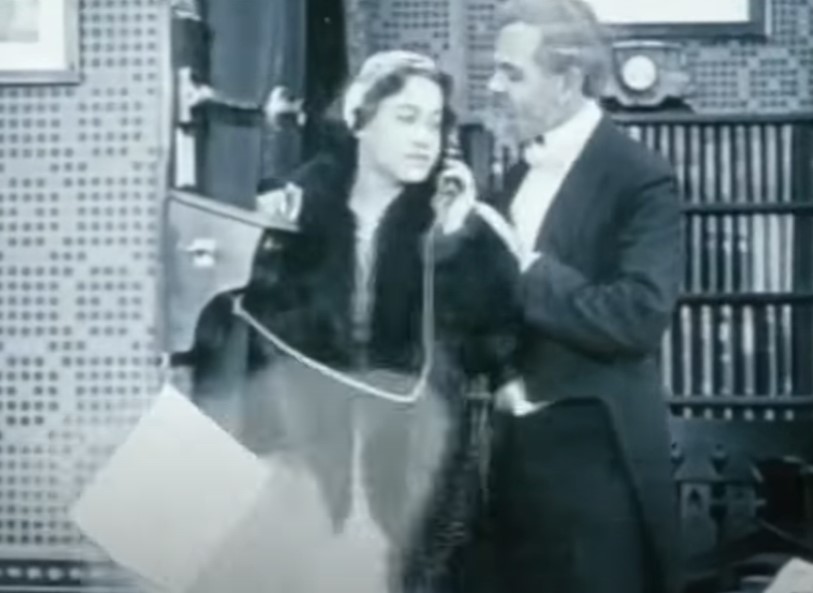 Eclair American, A Lucky Holdup (1912)
Eclair American, A Lucky Holdup (1912)
27. The Press Condemned Her
Gibson had given one of the most gut-wrenching performances in history, but instead of awe, many felt sickened. The New York Dramatic Mirror wrote that the whole film was “revolting,” and even took Gibson herself to task for “commercializ[ing] her good fortune by the grace of God”. Then again, Gibson’s punishment for starring in the film was far worse than her crime.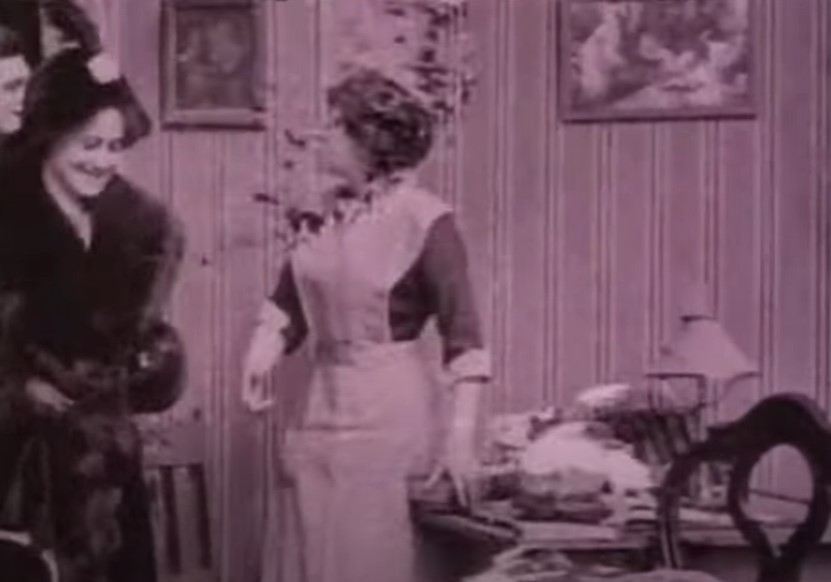 Eclair American, A Lucky Holdup (1912)
Eclair American, A Lucky Holdup (1912)
28. She Had A Brief Golden Period
Once Saved from the Titanic came out, Dorothy Gibson was truly on top of the world. She was already one of the very first stars on film before the sinking, and in May 1912, just as the movie premiered, she was the highest-paid actress in the world alongside Old Hollywood darling Mary Pickford. And then it all came crashing down.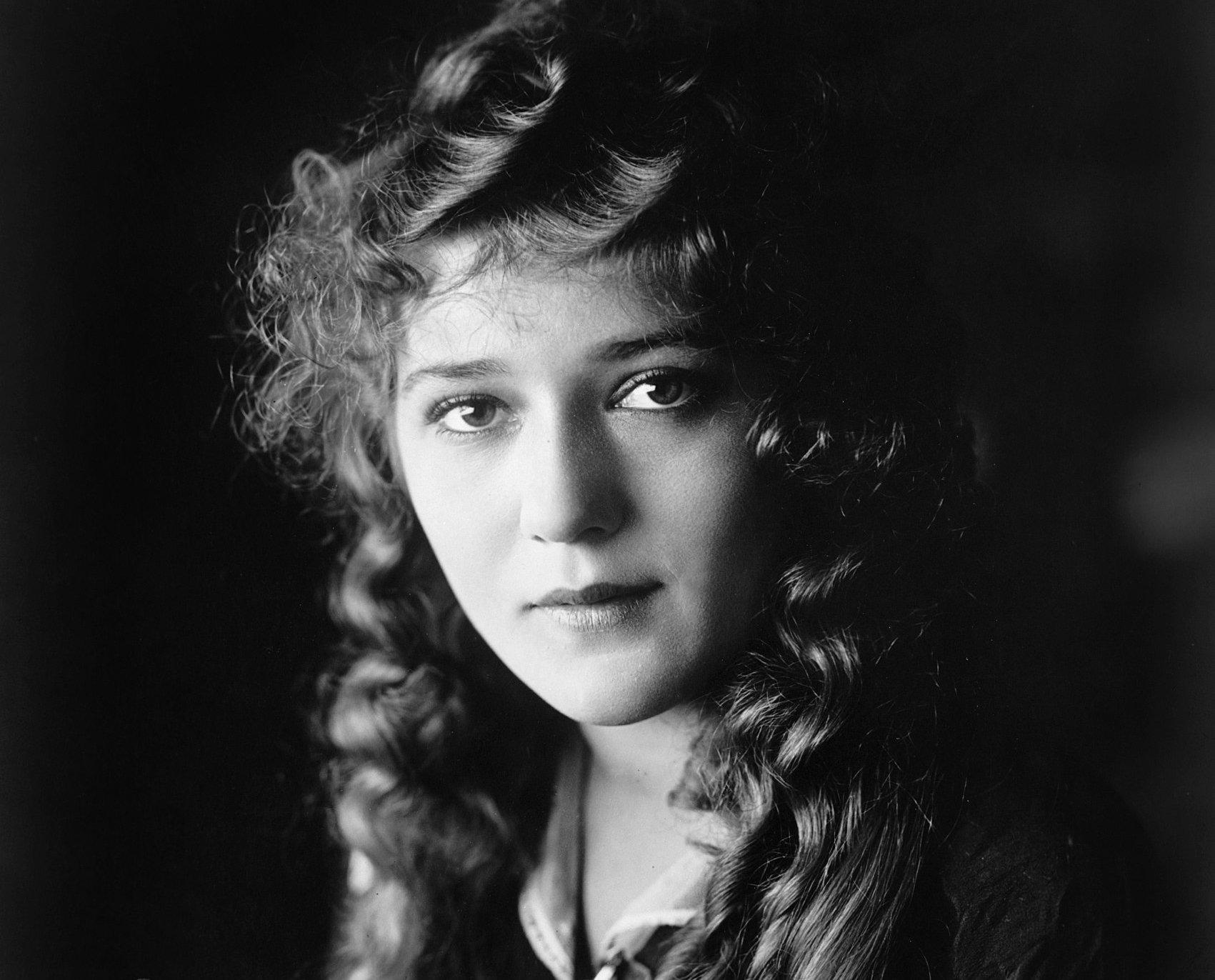 Rufus Porter Moody, Wikipedia
Rufus Porter Moody, Wikipedia
29. She Had A Total Breakdown
In the wake of Saved from the Titanic, Gibson’s life changed forever—in a horrific way. In truth, the stresses of living through the Titanic sinking all over again on set burdened her beyond all reason. Afterward, one newspaper reported “She had practically lost all her reason, by virtue of the terrible strain she had been under”.
In other words, she had a complete mental breakdown. There was only one thing for her to do.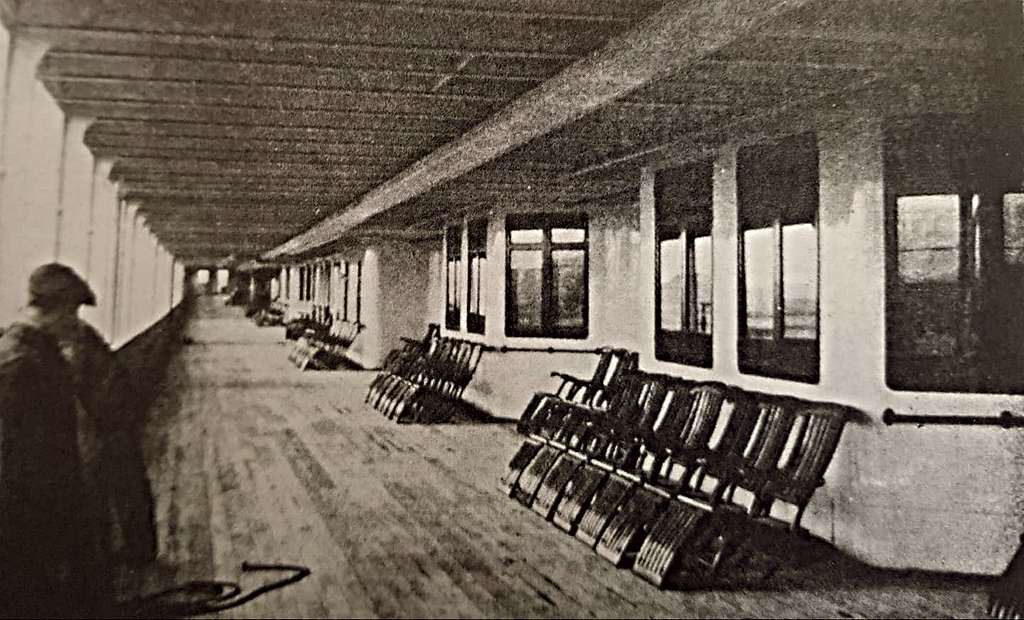 Unknown author, Picryl
Unknown author, Picryl
30. She Quit Acting
Dorothy Gibson had an extremely promising career before the Titanic, but there’s a reason we don’t know her as well today as her contemporary Mary Pickford: She quit acting entirely after her ordeal on Saved from the Titanic. Instead, she tried to jump-start a career in the opera, with some initial success.
But that doesn’t mean drama was done with her—one more violent event would break open all the secrets she had left.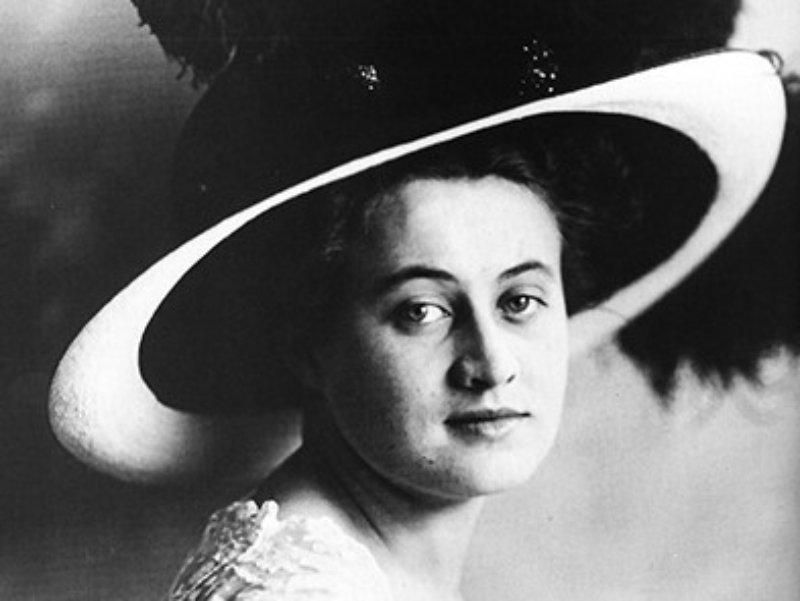 Unknown author, Wikimedia Commons
Unknown author, Wikimedia Commons
31. She Killed A Person
Just a year after wrapping Saved from the Titanic and quitting the silver screen, a new disaster struck Gibson. This time, it was even more ruinous. She was driving a sportscar through the New York City streets, zipping around like the celebrity she was. Then suddenly, she struck and killed a pedestrian. It was a whole different trauma, and it turned into a fiasco.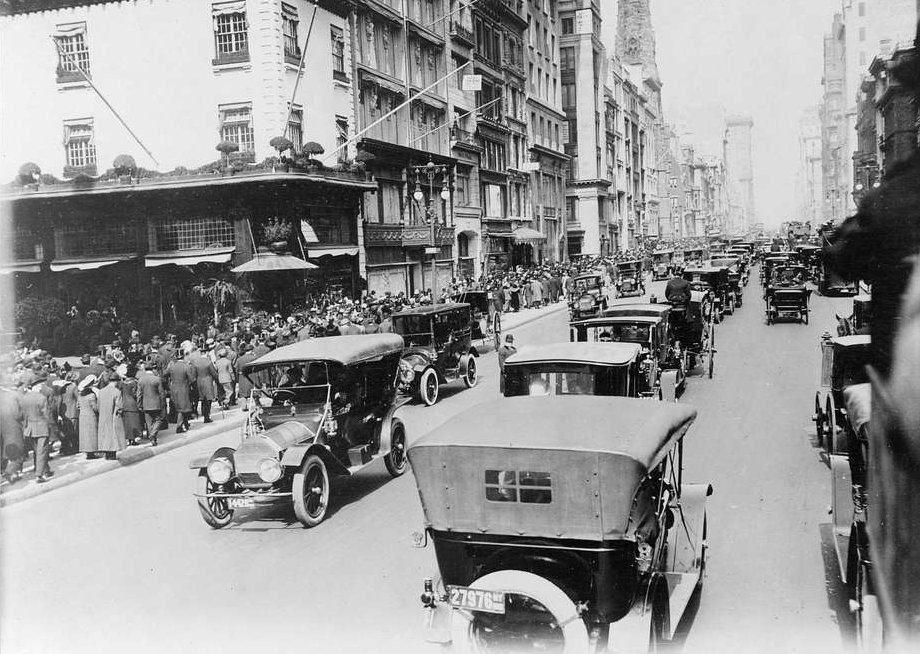 Library of Congress, Picryl
Library of Congress, Picryl
32. She Was In An Infamous Court Battle
Gibson’s fatal accident splashed her all across newspaper headlines and gossip columns, but that was the least of her worries at the time. A lawsuit about the case also landed the actress in a New York Court room to defend her actions that day. And as lawyers began digging around the circumstances, they made a very scandalous discovery.  Ulf Wittrock, Shutterstock
Ulf Wittrock, Shutterstock
33. There Was A Strange Detail About Her Case
As it happened, the car that Gibson was driving when she hit the pedestrian wasn’t her own—and this caused a domino effect of probing questions and shocking answers. Because instead, the car belonged to Éclair Studios executive Jules Brulatour, the man who had convinced her to film Saved from the Titanic. And why was she driving his car? Well… Sicnag, CC BY 2.0, Wikimedia Commons
Sicnag, CC BY 2.0, Wikimedia Commons
34. She Was The Other Woman
When the courts discovered that Gibson had been driving Brulatour’s vehicle, they unearthed her most shameful secret. As it turned out, she and Brulatour had been having an affair for years, since before she made Saved from the Titanic—which may be another reason why Gibson felt pressured to do the horrific film. But that was far from all.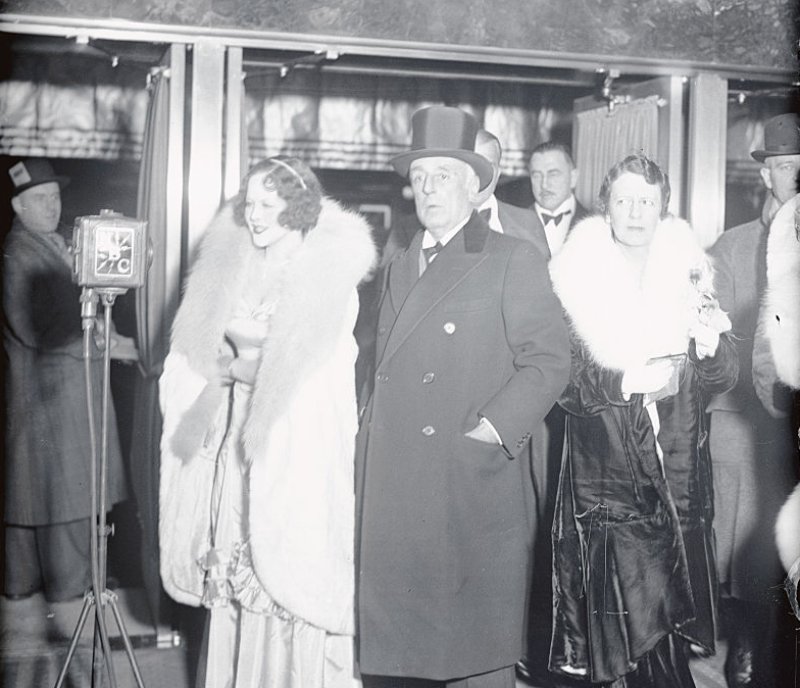 Bettmann, Getty Images
Bettmann, Getty Images
35. She Was A Homewrecker
See, Brulatour wasn’t just a high-profile film executive at the time, he was also married with children. Although he and his wife Clara had separated by the time the truth came out in court, it was such a scandal that Clara rushed to divorce him rather than sully her name one second longer.
Gibson and Brulatour were now out in the open, and it forced them to make a big decision. GAS-photo, Shutterstock
GAS-photo, Shutterstock
36. She Got Her Wedding At Last
Society at the time demanded propriety, especially of its celebrities. So as Brulatour’s power continued to grow—he eventually became a millionaire and a member of a film committee in Washington—he knew if he wanted to go any further in his career, he’d have to legitimize his illicit relationship.
So, in 1917, Gibson finally married her affair partner. It was not happily ever after. TranStudios Photography & Video, Pexels
TranStudios Photography & Video, Pexels
37. Her Rival Tried To Ruin Her
The traditionalists around Gibson and Brulatour might have been happy about their union, but Brulatour’s ex-wife certainly wasn’t. Her revenge was vicious. Clara went after the legitimacy of the marriage with everything she had, claiming that it was invalid for various minute legal reasons. Was she grasping at straws? Maybe. But she sure got what she wanted in the end.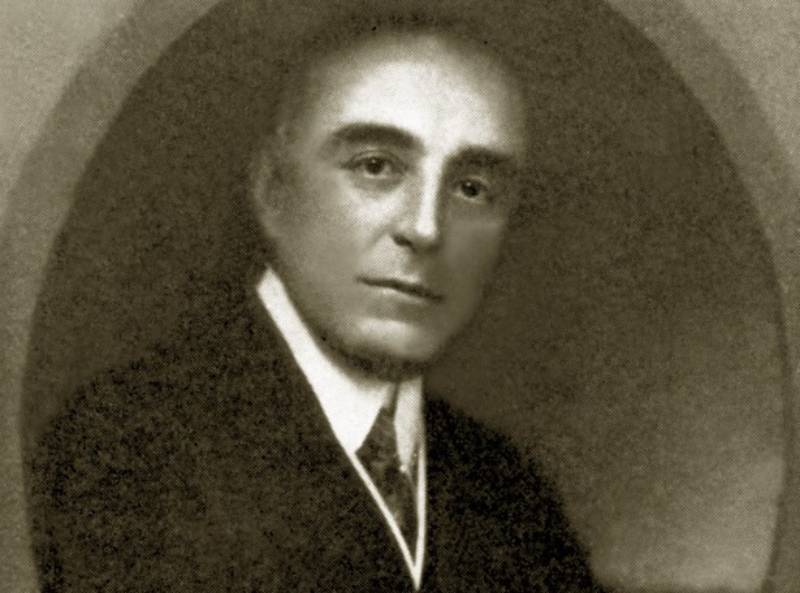 Randy Bryan Bigham Collection, Wikipedia
Randy Bryan Bigham Collection, Wikipedia
38. The Stress Destroyed Her
Whether or not Gibson’s marriage to Brulatour was legitimate or not didn’t matter in the end. After the humiliation of her first court case, these legal threats were enough to scare Gibson to her core—and the stress ruined whatever happiness she could have found with Brulatour. Within two years, they had dissolved the union.
The fallout of their split was more lasting than the relationship itself. RDNE Stock project , Pexels
RDNE Stock project , Pexels
39. She Ran Away
Although Brulatour gave Gibson a generous alimony payment and even let her use his last name after they parted ways, it was cold comfort. The former screen actress was mortified at all this airing of her dirty laundry and had to get the heck out. She fled to Paris with her mother, where she would stay for nearly the next three decades.
However, Gibson still had some dark secrets even then.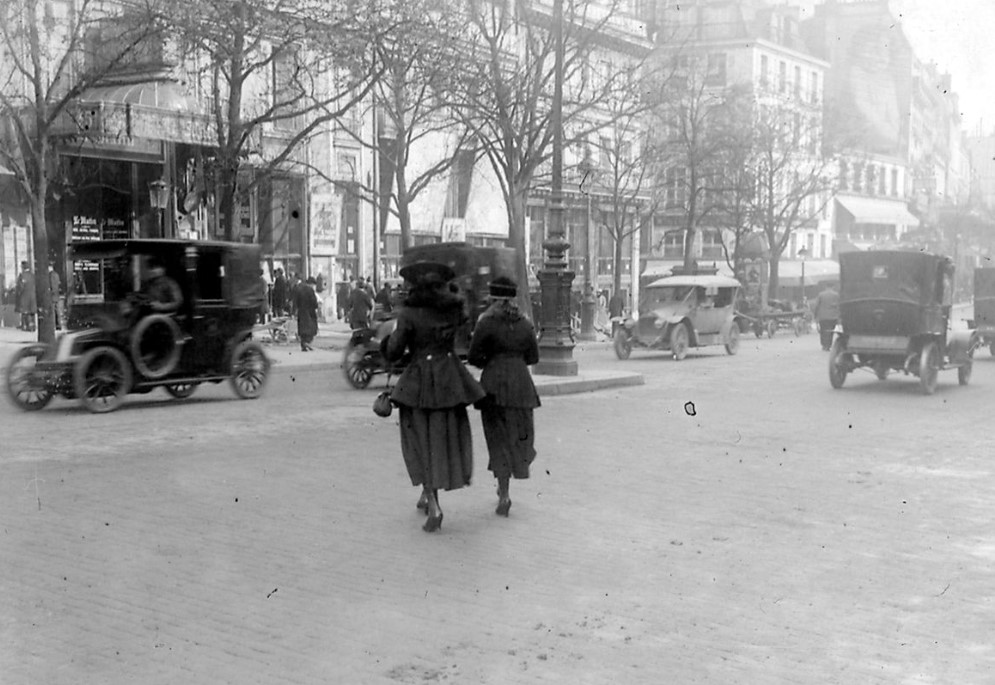 Yanterrien, CC BY-SA 3.0 , Wikimedia Commons
Yanterrien, CC BY-SA 3.0 , Wikimedia Commons
40. She Was In The Middle Of A War Zone
While Gibson was over in Europe, you might think she was gallivanting about and having fun. Well, no. In fact, by the late 1930s, all of the continent was rife with tensions that would lead to WWII. Gibson’s reaction was heartbreaking. According to one report, she didn’t leave Europe and go back to the safety of America because, given her experience on the Titanic, she was too terrified of the sea journey. Then again, there is a more chilling explanation. National Archives and Records Administration, Picryl
National Archives and Records Administration, Picryl
41. She Had Dark Beliefs
While Gibson might have claimed that she was just too scared to leave, the truth is she might have been quite, er, comfortable living in territory controlled by the Third Reich and the Axis Powers. Reports from around this time say that both Dorothy and her mother had become sympathizers with Benito Mussolini and his ilk.
Yes, dark. But there’s more.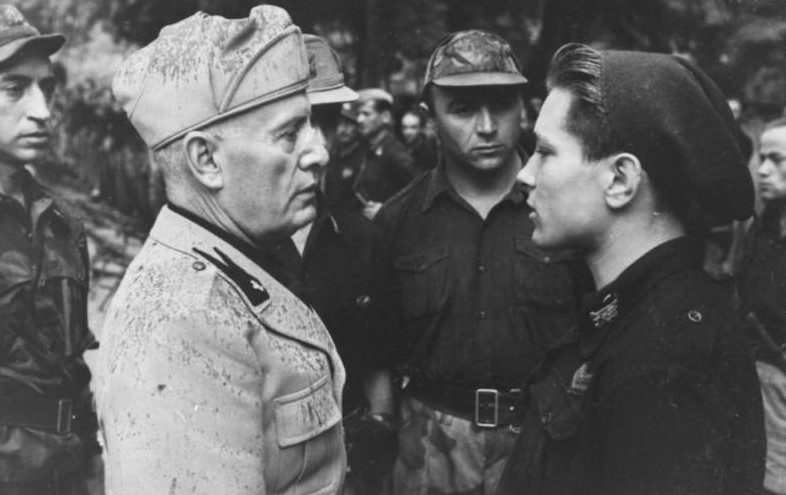 Bundesarchiv, CC-BY-SA 3.0, CC BY-SA 3.0 DE, Wikimedia Commons
Bundesarchiv, CC-BY-SA 3.0, CC BY-SA 3.0 DE, Wikimedia Commons
42. She Went Above And Beyond For The Bad Guys
Now, details about Gibson’s life in this period are necessarily hazy—these aren’t things you exactly want to broadcast—but other information indicates she really went in for the cause, even becoming a spy for the Axis countries. Oh, Dorothy.
Still, this wasn’t the end. As the conflict wound down and Gibson perhaps saw she was on the wrong side of history, she made a rash announcement.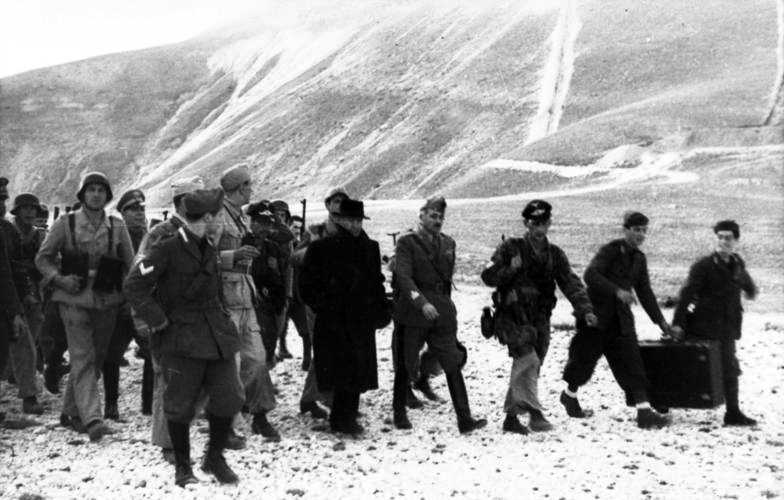 Bundesarchiv, CC-BY-SA 3.0, CC BY-SA 3.0 DE , Wikimedia Commons
Bundesarchiv, CC-BY-SA 3.0, CC BY-SA 3.0 DE , Wikimedia Commons
43. She Went Behind Bars
In 1944, at the tail-end of WWII, Gibson reportedly denounced all her former shady sympathies. But her declaration got her into near-fatal trouble. She was, after all, still in Italy at the time, and authorities threw her behind bars in San Vittore in Milan for being an “agitator”. As if her life really needed any more drama added to it. But she was about to get another helping. Mssddmit, CC BY-SA 4.0, Wikimedia Commons
Mssddmit, CC BY-SA 4.0, Wikimedia Commons
44. She Experienced A “Living Death”
Gibson’s life now resembled a villain’s in an Indiana Jones film, but this was no fiction—and her reality was terrifyingly harsh. She described her stint in the holding cell as a “living death,” and feared she would perish behind the bars, forgotten and defeated. Yet just like with the Titanic all those years ago, luck was with her.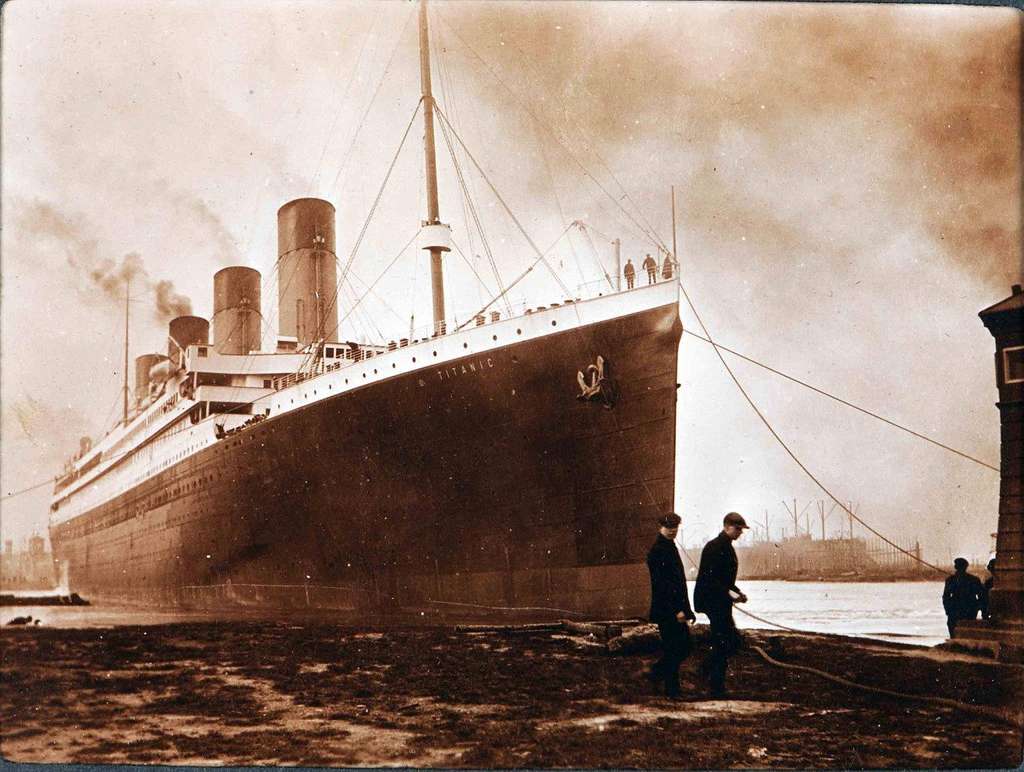 Unknown, Picryl
Unknown, Picryl
45. She Made A Great Escape
Dorothy Gibson didn’t stay anywhere she didn’t want to be, and she did not want to be in San Vittore. It wasn’t long before she planned a successful jailbreak with two other detainees, thanks in part to interventions from a resistance group. Free at last, Dorothy fled to Switzerland. But if she was expecting a hero’s welcome, she didn’t get one—she got a brutal interrogation. Londo Mollari, CC BY-SA 2.0 , Wikimedia Commons
Londo Mollari, CC BY-SA 2.0 , Wikimedia Commons
46. She Was Under Investigation
The Allied Forces were very much onto Gibson’s movements during this time, though they couldn’t tell if her sympathies for Mussolini and his friends were a survival tactic, or if she really was an Axis spy. American government official James G Bell did the honors and grilled Gibson about her time in Italy to find out. He came to a bizarre conclusion.
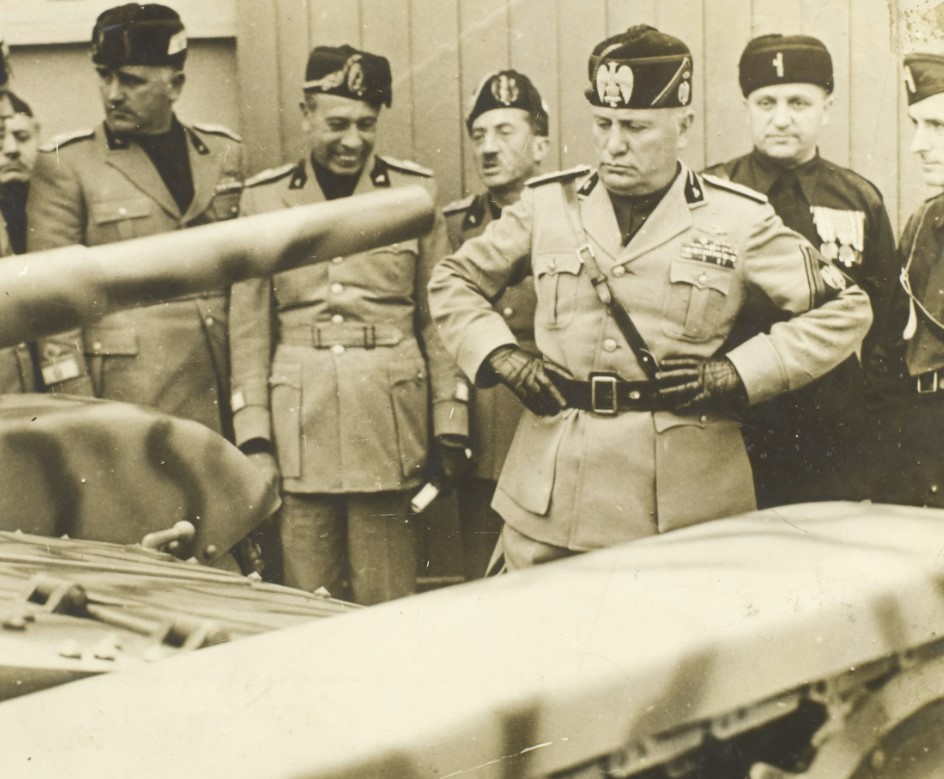 Brazilian National Archives, Wikimedia Commons
Brazilian National Archives, Wikimedia Commons
47. She Had A Fatal Flaw
We may never know what was really in Dorothy Gibson’s heart during this time, but her interrogator dealt her a cruel insult anyway. According to Bell, Gibson couldn’t possibly have been an Axis sympathizer, mostly because she was “too stupid” to be a spy. Of course…maybe that’s how Gibson wanted to come across.
Whatever the truth, karma was coming for her anyway. Anna Demianenko, Shutterstock
Anna Demianenko, Shutterstock
48. She Died In Style
After going through the wringer with Bell, a 56-year-old Gibson settled in Paris for the post-war years. Except she barely got to see them. Her many traumas finally caught up to her, and in 1946 she passed, either from a stroke or a heart attack, in her apartment. Nonetheless, she did it in celebrity style: She was staying at the Ritz at the time.
Oh, and she had one more surprise.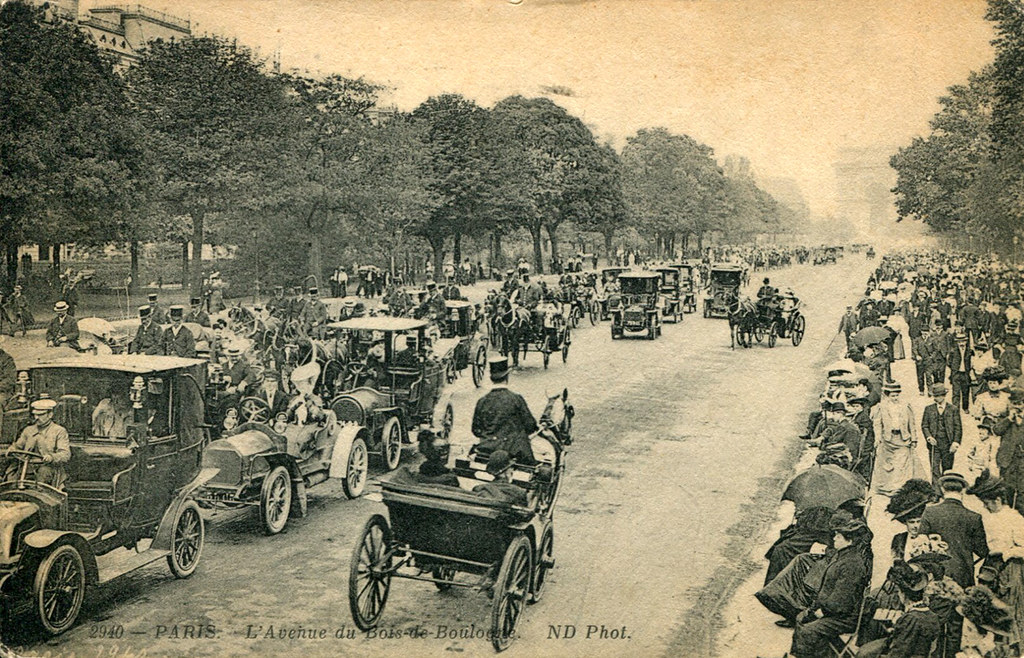
49. She Had A Fiery Affair
When Gibson’s will came out in the wake of her passing, it contained one juicy detail. She left 50% of her estate to her mother, which everyone expected. But the other 50%? That went to her international lover Emilio Antonio Ramos, who worked as a press attaché for the Spanish Embassy in Paris. Get it, Dorothy. Kaspars Grinvalds, Shutterstock
Kaspars Grinvalds, Shutterstock
50. She’s A Lost Artist
With a life chock-full of some of the biggest events, scandals, and tragedies of the 20th century, it’s a wonder that Dorothy Gibson isn’t more well known today. Then again, perhaps it’s not: Even though Saved from the Titanic has an infamous origin, the film itself is now lost. A fire on the Éclair Studios lot destroyed it in 1914.
More than that, most of Gibson’s other filmography is lost too. Her only surviving work is the 1912 adventure comedy A Lucky Holdup.


